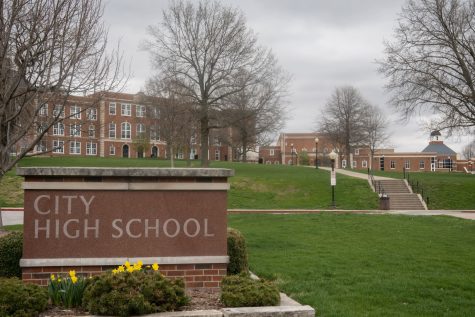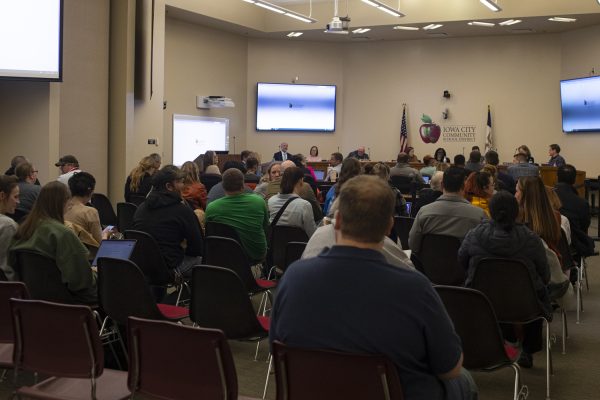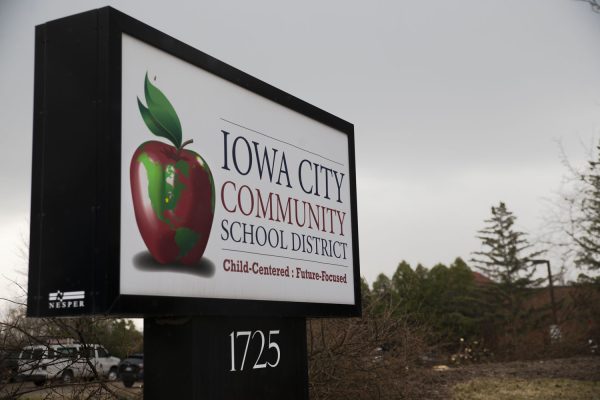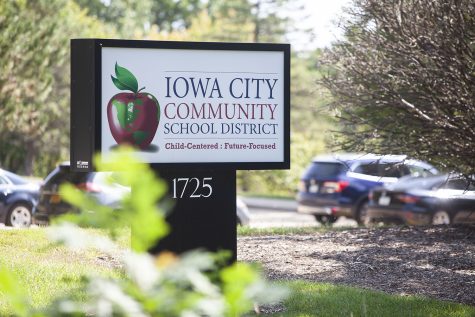Iowa City schools report larger class sizes with fewer classroom teachers
At the Iowa City Community School District’s school board meeting on Tuesday, an update on class sizes and school staffing was presented to board members.
September 13, 2022
The Iowa City Community School District reported larger classroom sizes and fewer teachers in elementary schools this year compared to the 2021 academic year metrics.
As of Aug. 17, 349 classroom teachers were deployed across 22 elementary schools in the district. In the 2021-22 academic year, the district recorded 370.5 elementary school teachers.
In an interview with The Daily Iowan, ICCSD Chief Human Resource Officer Nick Proud said he does not consider the district to be in a teacher shortage currently.
The school board received an update on current enrollment and staffing numbers at a meeting on Tuesday.
Board President Ruthina Malone wrote in an email to the DI that the school district is able to attract quality, diverse teachers.
“As a board member, I would want our next step to ensure that we are able to retain and grow them while they are with us and I’m confident that’s attainable,” Malone said.
RELATED: Iowa City Community School District experiencing rising prices, employee shortages
During the meeting, Malone said the numbers are not high enough to raise concern. She said the number of advertised teacher positions will likely fill before this becomes an issue.
The average elementary classroom size also increased since the 2021-22 academic year. The average class size of kindergarten through sixth grade slightly increased from 20.6 students in the 2021-22 to 21.4 students during the 2022-23 school year.
“I think we’re in a position where we’re going to have to figure out what’s going to work with the amount of resources that we have because there will be more people in need that will impact these numbers that we see in front of us,” Malone said during the Tuesday meeting.
What wasn’t accounted for in the data was specialized classes that may have an unusually high or low number of students.
Board Vice President Lisa Williams asked for only core classes, such as freshman English or World History, to have student enrollment recorded.
“If we could get a break-out or a pull-out of the required classes…what those class sizes look like,” Williams said during the meeting. “I think that might give us a better understanding.
In 2017, the board passed a Weighted Resource Allocation Model (WRAM), which helped lower class sizes throughout the school district’s elementary schools, according to the district’s website.
The model lowered class sizes in six elementary schools with the “greatest needs to aspirational goals” of less than or equal to 20 students in grades kindergarten through second and less than or equal to 26 students in grades third through sixth grades.
“That means that in those schools with WRAM staffing the same number of students are now placed into a larger number of classes requiring more classrooms to house them,” the website states.
Board member J.P. Claussen said at the meeting that he wants to take a closer look at the number of teachers in relation to the average class size.
“There is a very big difference between the 200-kid school and a 600-kid school and class size WRAM doesn’t do anything about that. And that, I think, that’s a secondary question too, is that sometimes what you need is maybe a difference in administrative support or these other supports, too,” he said.
Claussen said looking at class size does not give all the necessary details.
“To lower the average class size, you have to hire a whole bunch of teachers because you have to hit all those core areas,” Claussen said. “… I think we miss a lot of information when we only look at class size.”










